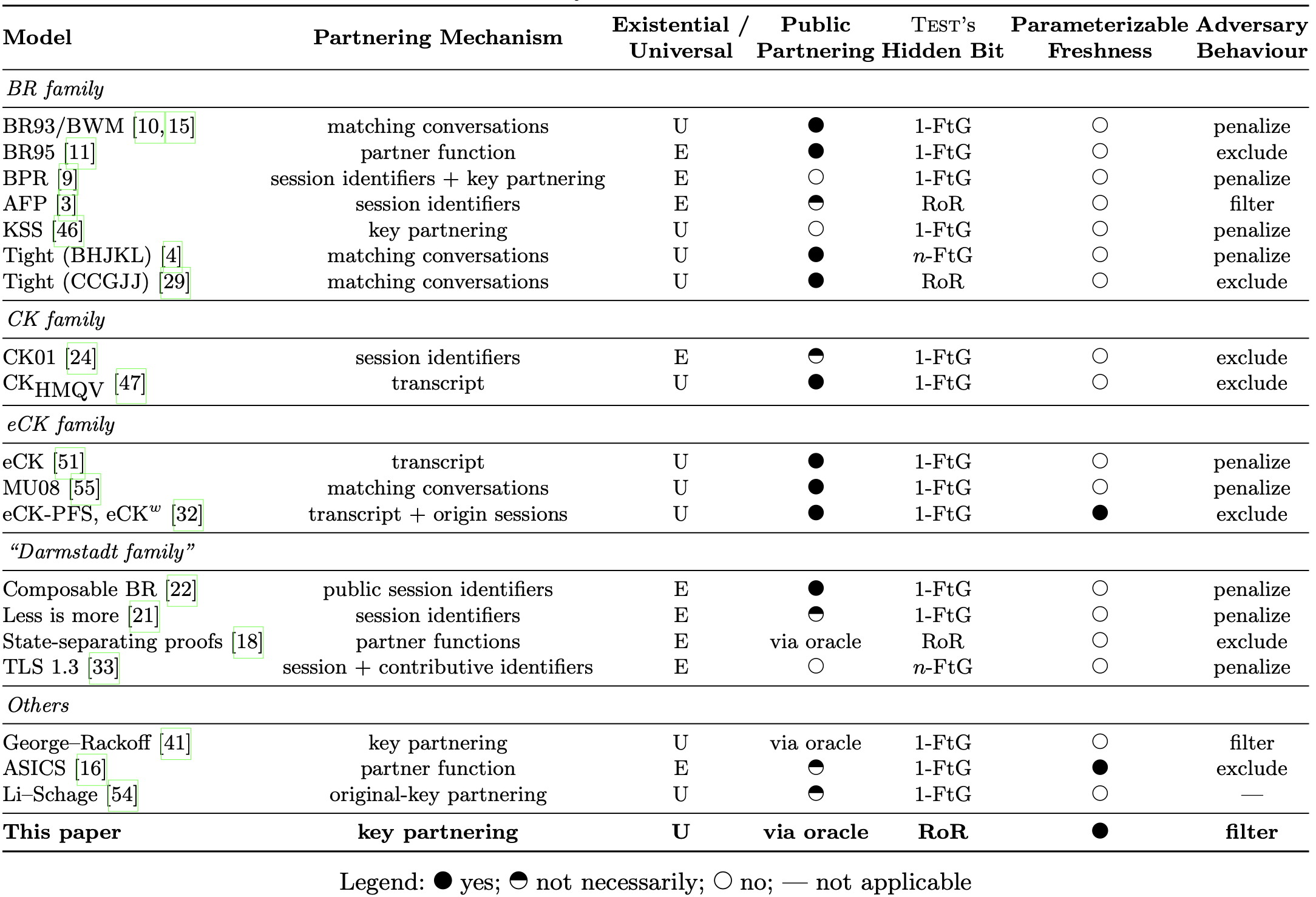
Douglas Stebila
Falsifiability, composability, and comparability of game-based security models for key exchange protocols
Abstract
A security proof for a key exchange protocol requires writing down a security definition. Authors typically have a clear idea of the level of security they aim to achieve. Defining the model formally additionally requires making choices on games vs. simulation-based models, partnering, on having one or more Test queries and on adopting a style of avoiding trivial attacks: exclusion, penalizing or filtering. We elucidate the consequences, advantages and disadvantages of the different possible model choices.
Concretely, we show that a model with multiple Test queries composes tightly with symmetric-key protocols while models with a single Test query require a hybrid argument that loses a factor in the number of sessions. To illustrate the usefulness of models with multiple Test queries, we prove the Naxos protocol security in said model and obtain a tighter bound than adding a hybrid argument on top of a proof in a single Test query model.
Our composition model exposes partnering information to the adversary, circumventing a previous result by Brzuska, Fischlin, Warinschi, and Williams (CCS 2011) showing that the protocol needs to provide public partnering. Moreover, our baseline theorem of key exchange partnering shows that partnering by key equality provides a joint baseline for most known partnering mechanisms, countering previous criticism by Li and Schäge (CCS 2017) that security in models with existential quantification over session identifiers is non-falsifiable.
Keywords: key exchange, security definitions, composability
Reference
Chris Brzuska, Cas Cremers, Håkon Jacobsen, Douglas Stebila, Bogdan Warinschi. Falsifiability, composability, and comparability of game-based security models for key exchange protocols. In Colin Boyd, Reihaneh Safavi-Naini, Leonie Simpson, editors, Information Security in a Connected World: Celebrating the Life and Work of Ed Dawson, LNCS, vol. 15600, pp. 214-255. Springer, March 2025. © Springer.
Download
BibTeX
Funding
This research was supported by:- Natural Sciences and Engineering Research Council of Canada (NSERC) Discovery grant RGPIN-2022-03187
- Research Council of Finland
